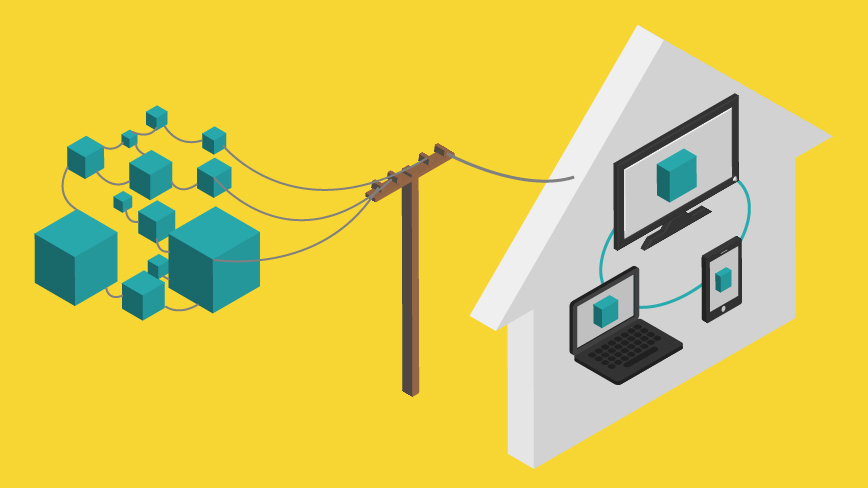Addressable TV advertising, digital out of home and optimization for digital assistants are three areas in which programmatic media buying could take off.
For years, programmatic media buying has pushed forward the frontier of agency comfort zones by challenging some of their most ingrained practices. While person-to-person media buys still happen every day, 48% of agencies and 63% of advertisers engage in regular, ongoing programmatic media buy activities.
As more decision-makers grow familiar with the capabilities and promise that programmatic media buying offers, the potential for the technology to grow, improve and flourish increases. Here are just some of the ways programmatic will likely push the envelope even further in the months ahead, providing new opportunities for brands, content distributors and agencies alike.
Addressable TV Advertising
The power of digital advertising lies in its data-guided processes. Internet users leave a data trail of their activities, signaling dozens, if not hundreds, of potential segmenting identifiers that allow brands to pinpoint their most actionable audiences. On the back end, data can be used to configure ad display service so that the ads served and the eyes seeing them are a perfect match.
To date, such one-to-one targeting is not available in the linear TV space. Although advanced data sets are starting to be applied to the TV media selection to enhance targeting, the delivery of television is still one-to-many in most cases, meaning that you are still buying spots and not individuals. It is important to remember that linear television is delivered via mass transmissions of scheduled programs through broadcast, satellite or cable signals. Therefore, true programmatic, audience-based buying is not possible within linear television’s delivery systems.
However, addressable TV does allow for much deeper targeting by utilizing the multichannel video programming distributor’s (MVPD) set-top-box delivery systems to deliver ads at the household level. This process does not lead to one-to-one targeting that is available in the digital world, but it does deliver at the one-to-household level, using homes as a proxy for a desired audience. Approximately 50% of cable TV households are now available at this level of targeting, making it a viable and scalable solution for advertisers. But since the delivery mechanism is still a linear TV transmission, true programmatic protocol cannot be supported.
How Does Addressable TV Work?

Companies dabbling in this type of specificity include Time Warner Cable and Roku. TWC is now offering advertisers a way of segmenting served ads to their 10.8 million video-on-demand customers on a granular level. Comcast, Dish TV, AT&T AdWorks and Cablevision are also now offering addressable households, reaching over 50MM households collectively. Available demographic information can include income, age, gender, number of children and even whether the household has an auto lease set to expire soon. CRM and custom DMP segments can also be applied to targeting.
Despite the limitations in linear TV targeting, IPTV (Internet Protocol Television) can be bought programmatically at a one-to-device level. IPTV includes connected TV devices like PlayStation, Xbox and Chromecast as well as TV apps like YouTube and Hulu. Often known as OTT (Over the Top), IPTV can be bought in real-time through exchanges or private marketplaces at the same granularity as digital channels using cookie or device ID markers. While IPTV has relatively lower scale, it now represents approximately 9% of all TV Impressions.
Growth to Other Channels
A few years ago, programmatic buying in general was considered a bold experiment, with programmatic buys having been regarded as a distant prospect. As digital video and display caught traction for their revolutionary capabilities, others began to see the light.
Once such venue is digital out-of-home advertising. This market has been growing since the late 2000s, but it was previously hampered by a complex media buying process. Aggregation models proved largely ineffective, and direct buys necessitated an excess number of touchpoints and administrative tasks.
Programmatic holds the promise to eliminate these sources of friction. “By connecting digital out-of-home inventory to programmatic platforms, media owners will be able to offer their unsold network inventory to buyers who control digital and television budgets,” says ScreenMedia Daily. “Programmatic also provides buyers with a more efficient way to buy across multiple networks.”
Another area where programmatic could penetrate is search engine optimization, where the search engine is in fact a digital assistant like Apple’s Siri. Influencing digital assistants through smart optimization and key positioning via programmatic will become a critical competitive differentiator as our devices and their in-built AIs become more entwined with our lives.

